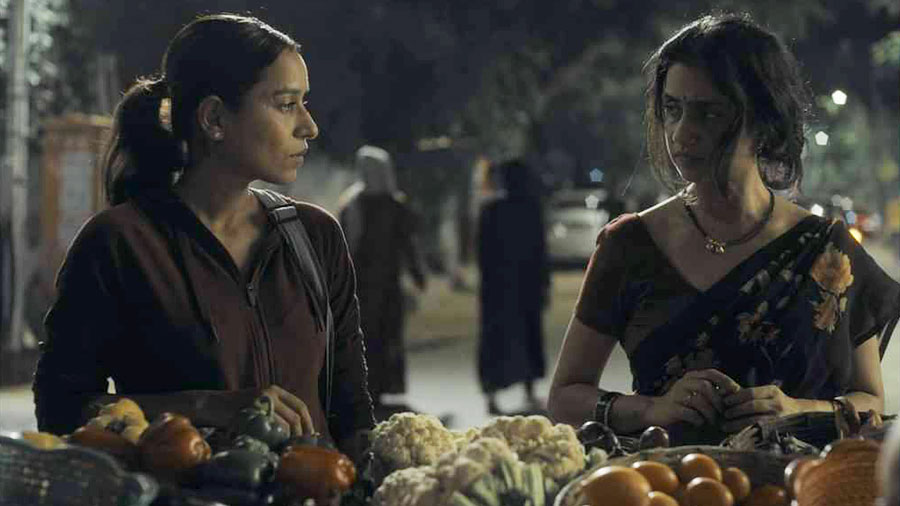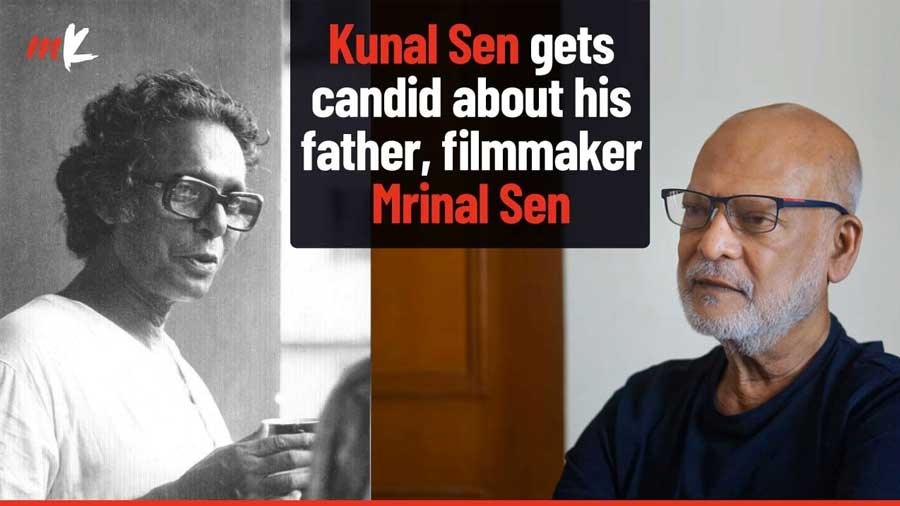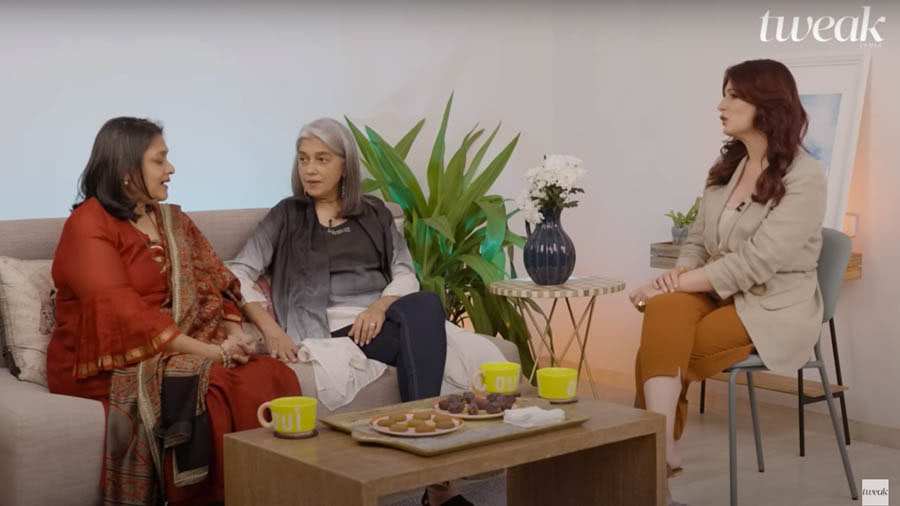Alice, the house help in The Monsoon Wedding, Bonnie Bakshi in A Death in the Gunj to Ishita in The Mirror, Lust Stories 2 — Tillotama Shome has impressed all with multiple roles in her more than two-decade-long film career.
Her portrayal of an upper-class single woman at the crossroads of desire, station and lust has been winning rave reviews.
My Kolkata caught up with the actor in an email interview on her latest role in the recent Netflix venture, working with Konkona Sen Sharma and more.
My Kolkata: Congratulations on Lust Stories 2. How would you describe your experience of working with forces like Konkona Sen Sharma and Amruta Shubhash?
Tillotama Shome: Thank you so much. I felt like the sum total of my efforts as an actor over the last two decades, earned me a place on the set of The Mirror. I was being carried forward by a tidal wave of choices unleashed by this extraordinary script and yet felt completely safe and anchored by Konkona and Amruta’s presence.
The duo of you and Konkona have become a strong force of cinema since A Death in the Gunj. How would you describe the dynamic?
(Laughs) I don't think this information is accurate but I am always ready to ‘duo’ with Konkona and I have already emotionally prepared for the inevitable, i.e. her next project won’t have me! She can't keep casting me. This is called growing up and letting go. But the thought of working with her excites me, as her process is very detailed and prepared. I admire that steely thoroughness before going into battle.

A still from 'The Mirror'
Your confrontation scene in the segment could be hailed as one of the finest pieces of screen-acting in recent times. Could you unpack what went behind the entire scene for us?
Thank you again. We workshopped this scene at Koko’s (Konkona) house, at the actual location, while it was getting set and then on the day of the shoot. The progression of beats in that scene is so powerfully written by Pooja and Koko, that we just had to follow the blueprint. The movement from ‘performing a fight’ for the sake of the man in the room to it actually turning into a ‘fight’ was so delicious to play. I felt the full force of female rage: a combination of anger, indignation, shame, self-loathing, cowardice, fear, humiliation as Amruta and I hurtled through that scene. It just spiraled so fast and neither of us could do much but stomp and seethe.
Personally, in what ways does The Mirror stand as an important and necessary conversation on female sexuality and liberation?
The script spoke to my rage, my desires and my self-loathing but it also spoke to my need for being able to empathize with parts of me that I feel are grey, messy and broken. The underlying feeling of what happens between Seema and Isheeta, being no one else’s business, was liberating.
Do you think we’ll have more narratives like this find its way in mainstream cinema in the coming years?
I have no idea about the future, but am grateful that the audience watched our film and gave it so much thought and love.
The entire idea of dealing with sexual acts (here voyeurism and exhibitionism), needs a lot of sensitivity and more importantly, a deep understanding of the same. How important do you think it was to strike the balance?
Balance is everything, especially if you want to dive into the unfamiliar. It is Konkona's sensitivity, the carefully written script, a progressive crew and meticulously worked out beats of the performance by Koko that got us to empathise with these women and not judge them. Anand Bansal’s lens was not looking at us but with us, the look was through the portal of a mirror and that gave us a new dimension to watch and be watched.
From the closest quarter possible, could you outline your prep for the character? How did you internalise the nuances and complexity that came with the character of Isheeta?
It became very clear after a few readings with Koko what she wanted. She communicated it with clarity, and very passionately. The script had it all, so I just had to show up and play with Amruta.
The characters you portray often stand as mirrors to society in a number of ways. Do you think it’s a conscious choice that you make while choosing your roles?
It is never a conscious decision to hold up a mirror to anyone or anything . I just want to do something that I have not done before, hence the script is key for me and I work with people who inspire me in some way...It is hard to get both, but when you do you can fly.
What would you point out as your primary inspiration behind your craft?
The desire to defy my limitations and explore the potential that art has to heal where words fail.

Another still from 'The Mirror'
Tell us a bit about the time you taught theatre to prison inmates in the US. What did you take from that experience?
I was very fortunate to receive the Inlaks scholarship to study Drama Therapy at New York University and after graduation found myself working at the Creative Arts Team that taught at Rikers Island, in one of its many programmes. I was lucky to be there. If cinema is about how we experience time, then the inmates were the best teachers for an actor. They were, after all, serving time. I learnt that the line between sanity and insanity is super thin and sometimes invisible. I was gutted to see that power structures criminalise people because they are too lazy to change the structural faults that create crime in the first place. After almost two years of working at Rikers, my heart felt bruised and exhausted and I decided to come back to India and act.
How would you define your journey in the film industry?
A magnificent start. Stagnation followed by a steep learning curve. Living life fiercely despite the occasional work and fighting depression. A profusion of work. Replenish and rethink. Balance.
Rapid Fire with Tillotama Shome:

Tillotama Shome
One character you wish you had played :
- The women portrayed by Isabelle Huppert draw me in ways that are hard to define.
One director that you’d like to work with:
- Abhishek Choubey
The character that you played that impacted you the most:
- Kanwar from Qissa by Anup Singh
An experience that you would try at least once in your life:
- To write a film or series.
The most Bong thing about you:
- Thinking about the next meal while I am eating.
One thing about Kolkata that you hold the closest:
- My parents built a home there, after traveling the length and breadth of India, after giving us everything we needed to have a happy life. That is home now, even though I don’t live there.








